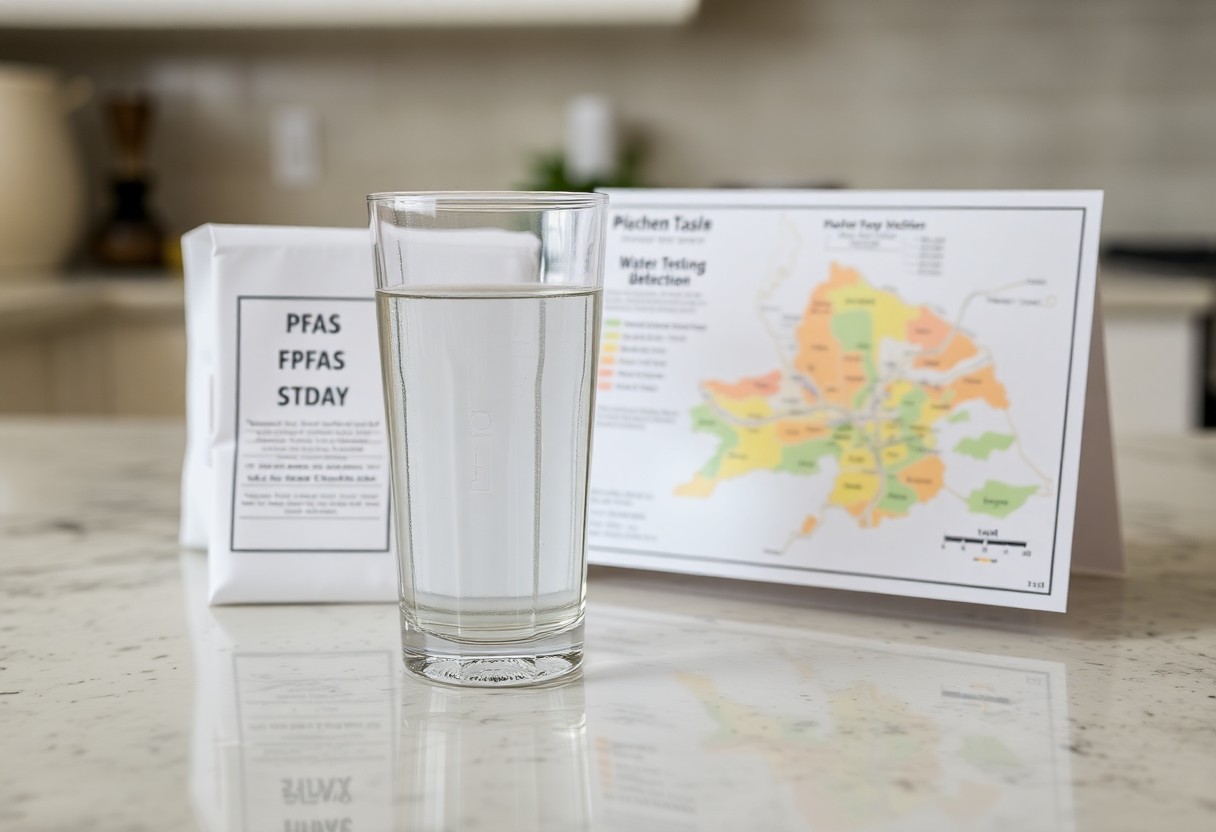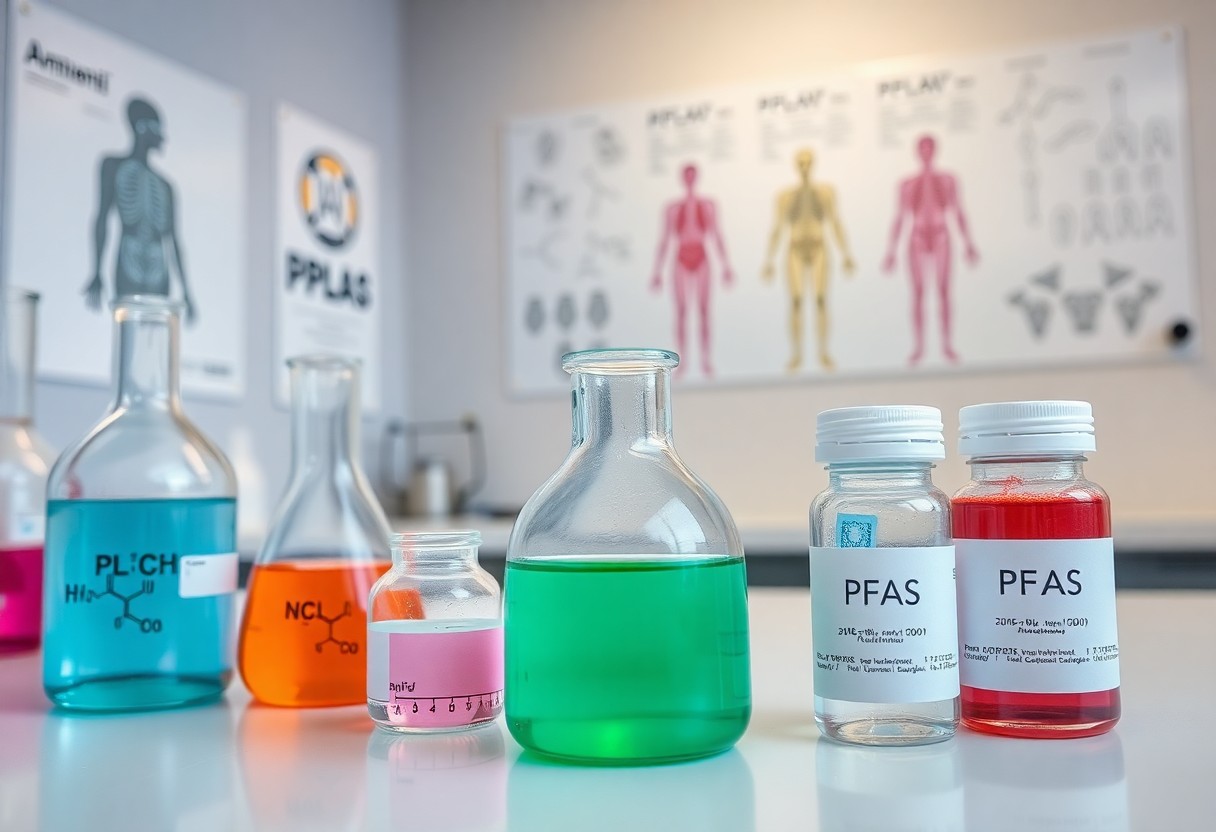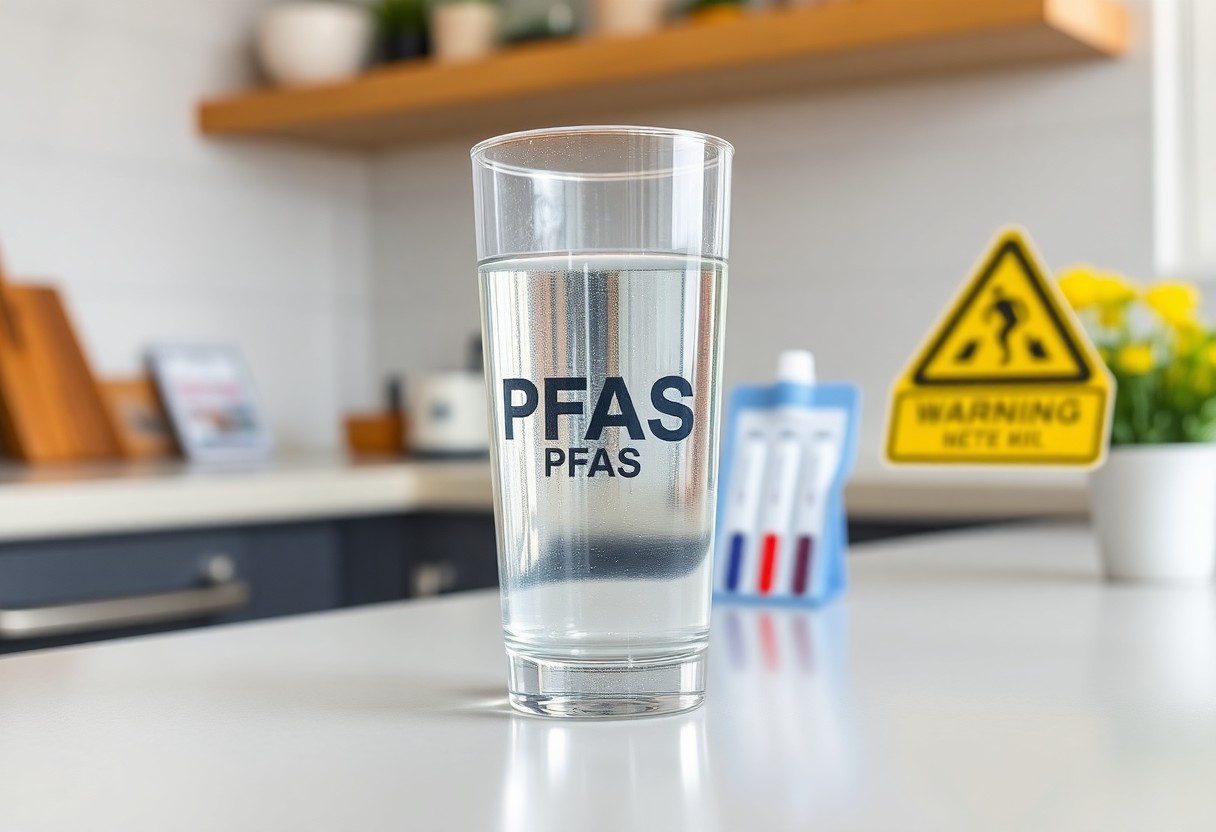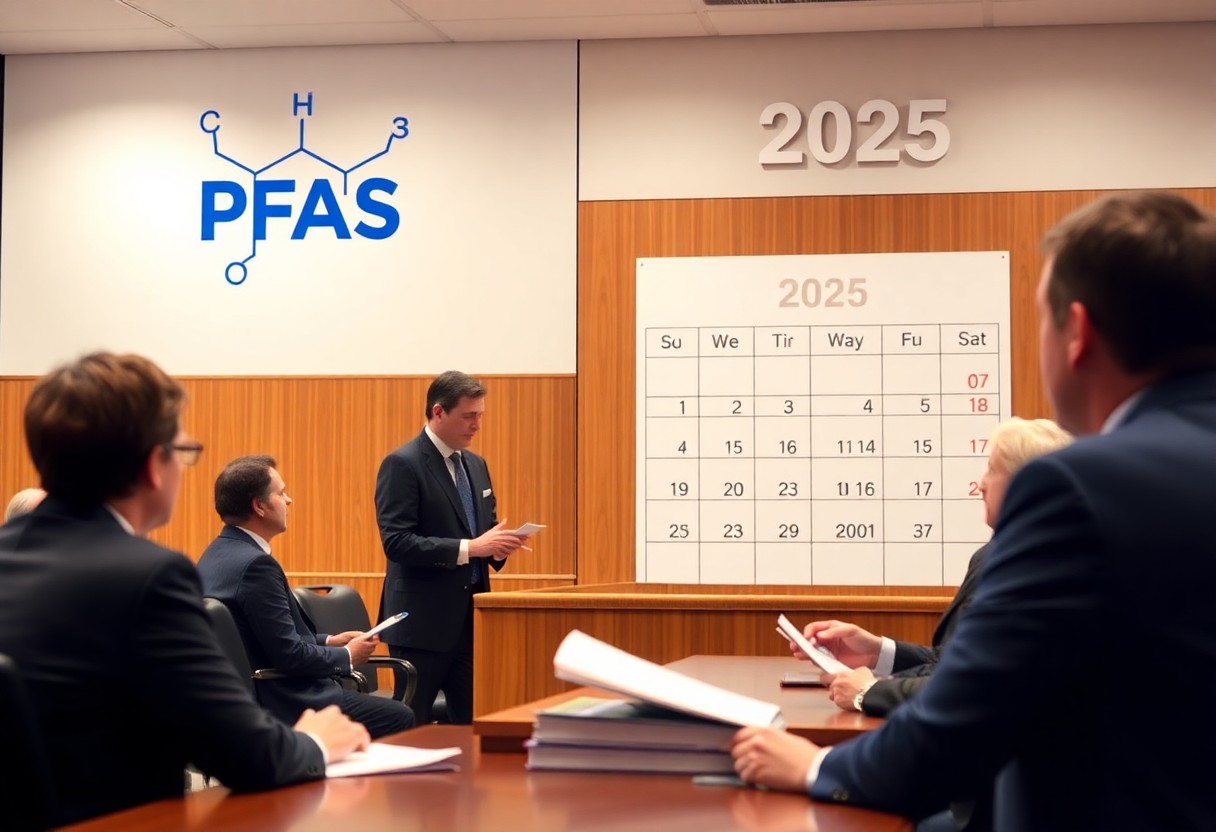It’s vital for you to understand the significant threat that PFAS (per- and polyfluoroalkyl substances) pose not only to human health but also to wildlife across various ecosystems. As eco groups push for accountability, you might wonder whether they can take legal action against corporations responsible for these harmful chemicals. This blog post will explore into the impact of PFAS on wildlife and explore the potential for legal recourse through eco-group lawsuits, shedding light on how these efforts can drive change and promote environmental protection.
Understanding PFAS
Your understanding of PFAS, or per- and polyfluoroalkyl substances, is vital in addressing their environmental and health impacts. These synthetic chemicals have been utilized since the 1950s in various products due to their water- and grease-resistant properties. However, they are often referred to as “forever chemicals” because of their remarkable persistence in the environment and human body, raising significant concerns about their safety.
Definition and Chemical Properties
Against their widespread use, PFAS present significant challenges to human health and the environment. This unique group of chemicals features a stable carbon-fluorine bond, making them resistant to degradation. Their chemical structure enables them to repel grease, oil, and water, qualities that have led to their incorporation into various consumer products, including non-stick cookware, food packaging, and waterproof clothing.
Sources and Environmental Persistence
Persistence is a defining characteristic of PFAS, leading to their accumulation in ecosystems. These substances are released through industrial discharges, wastewater treatment processes, and even through everyday items like firefighting foam and stain-resistant fabrics. As they are resistant to natural degradation, PFAS can remain in the environment for decades or even longer, contaminating drinking water sources and impacting wildlife.
Indeed, the presence of PFAS in the environment stems from various industrial activities and is exacerbated by their resistance to natural breakdown. Common sources include manufacturing facilities, airports, and military sites where firefighting foams are used. These chemicals easily leach into soil and waterways, highlighting their significant environmental persistence. Once released, PFAS can build up in the bodies of living organisms, including wildlife, posing dire health risks. Immediate action is needed to address the ongoing contamination and protect both human health and the ecosystems we depend on.
Wildlife Affected by PFAS
Some studies indicate that PFAS chemicals severely impact wildlife, posing risks to both aquatic and terrestrial species. These persistent pollutants accumulate in the environment, leading to harmful effects on ecosystems and bio-diversity. As these chemicals enter food webs, they can significantly alter the health and survival of various species, raising concerns about long-term ecological consequences.
Impact on Aquatic Life
Behind the scenes, PFAS infiltrate waterways, affecting the health of aquatic organisms. These chemicals can lead to developmental issues in fish and other marine life, impairing reproduction and growth rates. Moreover, as you consume contaminated seafood, you’re not just affecting your health; you undermine the entire aquatic ecosystem.
Effects on Terrestrial Wildlife
Wildlife exposed to PFAS faces several alarming challenges. Altered reproductive systems and increased susceptibility to diseases are just the beginning; many species may experience severe population declines. Your actions in supporting clean environments directly impact the vitality of these animals, as their habitat is increasingly threatened by pollution.
Indeed, terrestrial wildlife such as mammals and birds face alarming threats from PFAS exposure. These chemicals can disrupt endocrine functions, leading to reproductive issues and developmental abnormalities in young animals. Moreover, bioaccumulation of these substances in food chains poses significant risks for predatory species, as they may ingest high concentrations through their prey. Your awareness of PFAS impacts could influence efforts to limit exposure, ultimately helping to protect wildlife and preserve biodiversity.
Legal Framework Surrounding PFAS
It is crucial to understand the legal framework surrounding PFAS to grasp the potential avenues for environmental action. As more evidence of the harmful effects of PFAS on wildlife and human health emerges, regulatory bodies are pressured to implement stricter measures. You should be aware of ongoing debates about the need for comprehensive legislation that addresses the entire PFAS lifecycle, from production to disposal.
Current Regulations and Policies
After decades of regulatory gaps, recent moves by the EPA and state governments aim to establish guidelines for monitoring and mitigating PFAS contamination. However, enforcement often lacks consistency, leading to challenges in protecting vulnerable ecosystems. You can stay informed on the evolving landscape of PFAS regulations by following updates from environmental agencies.
Historical Cases Involving Environmental Groups
Across the United States, several environmental groups have successfully sued corporations for PFAS-related pollution, establishing precedents for holding polluters accountable. These lawsuits frequently center on the violation of the Clean Water Act and provisions of the Comprehensive Environmental Response, Compensation, and Liability Act (CERCLA). You may find these cases inspiring as they illustrate the power of collective action in confronting environmental threats.
Understanding the historical context of these lawsuits enhances your awareness of the legal precedents that can be invoked against PFAS pollution. Notably, groups like the Natural Resources Defense Council (NRDC) and Earthjustice have played pivotal roles in case law development, challenging companies for both negligent practices and the environmental damage caused. You may find it encouraging to learn that these highlights not only emphasize accountability but also pave the way for stronger regulations and greater community awareness, ultimately protecting both wildlife and public health.
Role of Environmental Groups
Now, you may wonder how environmental groups play a vital role in addressing the impacts of PFAS on wildlife. These organizations are passionate advocates for both environmental justice and conservation. By mobilizing public support and providing critical information, they highlight the pressing issues surrounding PFAS contamination, influencing both policy and public perception.
Advocacy and Awareness Efforts
Environmental groups engage in extensive advocacy and awareness campaigns to educate the public about the dangers of PFAS. Through outreach programs, social media initiatives, and community events, they aim to raise your awareness and promote meaningful discussions regarding the protection of wildlife and ecosystems affected by these toxic substances.
Potential for Litigation
Around the topic of PFAS, you might be curious about the potential for litigation against responsible parties. Environmental groups are considering legal avenues to hold industries accountable and seek remedies for the ecosystems harmed by these chemicals.
Litigation related to PFAS contamination can be complex but holds significant promise for enforcing environmental laws. By pursuing lawsuits, environmental groups aim to compel governments and corporations to address contamination effectively. Through legal action, they can demand cleanup efforts and remediation strategies, potentially leading to financial accountability for health impacts on both wildlife and communities. Successful litigation could also create a precedent for stricter regulations on PFAS usage, ultimately benefiting current and future generations.
Challenges in Suing Over PFAS
Many environmental groups face significant challenges when attempting to sue over PFAS contamination. The complexities of proving liability and the extent of harm caused by these substances often hinder legal proceedings. Furthermore, establishing a clear link between specific PFAS exposure and wildlife impacts can prove difficult, given the multitude of environmental factors at play.
Evidence and Scientific Complexity
Evidence of PFAS harm to wildlife can be intricate and multifaceted, as you must navigate various studies, chemical behaviors, and ecological impacts. Establishing causation is often problematic, requiring extensive research and expert testimony to connect PFAS presence to specific health effects in animal populations.
Legal Hurdles and Precedents
Hurdles arise in court not only due to the scientific challenges but also from existing legal frameworks. Many past cases regarding chemical exposure have set precedents that complicate new lawsuits. Courts often require stringent evidence demonstrating direct harm, which can delay your case or lead to dismissal, making it important that you thoroughly prepare and understand these legal landscapes.
Due to these legal hurdles, achieving a successful outcome in PFAS-related lawsuits can be an uphill battle. You may encounter limitations regarding the statutes of limitations and the burden of proof that risk undermining your claims. Each jurisdiction may have different interpretations of environmental laws, which can impact the treatment of PFAS cases. Understanding previous court rulings on similar matters also plays a role in shaping your strategy, as judges are often influenced by past decisions and the existing legal precedents surrounding chemical exposure cases.

Future Directions and Recommendations
Once again, it is imperative to recognize the ongoing need for comprehensive research into the impacts of PFAS on wildlife. As environmental awareness increases, you should advocate for more sustainable practices and support initiatives that focus on pollution reduction. Engaging with eco groups and policymakers can enhance public awareness and mobilize efforts toward effective solutions for protecting ecosystems.
Policy Changes and Regulatory Needs
At a time when the implications of PFAS pollution are becoming clear, you must urge lawmakers to establish stricter regulations on PFAS production and use. Advocating for policy changes can help protect both wildlife and human health by limiting exposure and encouraging the development of safer alternatives in various industries.
Collaborative Efforts for Wildlife Protection
Needs for collaboration among stakeholders are paramount in addressing wildlife protection in the context of PFAS pollution. You should participate in local and national initiatives that unite government, industry, and eco organizations to create a comprehensive strategy aimed at mitigating the impacts of PFAS on ecosystems.
In fact, collaboration can lead to significant advancements in monitoring wildlife health and developing remediation strategies. By forming partnerships with research institutions and community organizations, you can help facilitate the sharing of information and resources that ultimately protect the animals affected by PFAS contamination. Engaging in habitat restoration and conservation projects will not only revive ecosystems but also strengthen your community’s collective response to pollution challenges.
Conclusion
Presently, the impact of PFAS on wildlife raises significant concerns that you should consider as both a consumer and a steward of the environment. Eco groups possess the legal standing to sue polluters, potentially holding them accountable for damages inflicted on wildlife and ecosystems. Understanding your role in supporting these initiatives can amplify efforts to mitigate PFAS pollution. You can advocate for stronger regulations, engage in community awareness, and contribute to the movement that seeks justice for affected wildlife.



















